Tennis Net Height: The Definitive Guide
Tennis is a sport in which every small detail matters. One such detail is the height of the net. It might seem simple, but it’s crucial for playing the game. Understanding net height is key …
Written by: Maria Tarakanova
Published on: April 14, 2024
Tennis is a sport in which every small detail matters. One such detail is the height of the net. It might seem simple, but it’s crucial for playing the game. Understanding net height is key to mastering the game.
Table of Contents
Official Net Height Regulations
Tennis Net Height for Different Court Surfaces
Measuring Net Height
Tennis Net Height Adjustment
Effects of Adjustments on Gameplay and Player Development
Tennis Net Height Variations
Common Tennis Net Height Myths and Misconceptions
Effects of Incorrect Net Height on Gameplay and Player Development
Maintaining and Replacing Nets
FAQ
This article will explain why tennis net height is so important, explore the differences between nets and variations, give some tips for measuring tennis nets, and ask questions. Let’s dive in!

Official Net Height Regulations
According to official ITF (International Tennis Federation) regulations, the tennis court is divided in half by a net held up by posts at 3 ½ feet (1.07 meters). The net must be stretched tightly to fill the space between the posts, and it should have small holes to stop the ball from going through. At the center of the courts, the net should be 3 feet (0.914 meters) high and held in place with a strap. A white band covers the net’s top, and the cable cord holds it up.
- The maximum diameter of the cord or metal cable shall be ⅓ inch (0.8 cm).
- The maximum width of the strap shall be 2 inches (5 cm).
- The band shall be 2 inches (5 cm) and 2 ½ inches (6.35 cm) deep on each side.
The net posts are placed 3 feet (0.914 meters) outside the doubles court on each side for doubles matches. If a singles net is used in singles matches, the posts are placed 3 feet (0.914 meters) outside the singles court on each side. But if a doubles net is used, it’s supported by two sticks outside the single court, each 3 feet (0.914 meters) from the sideline.
- The net posts must be 6 inches (15 cm) square or 6 inches (15cm) in diameter.
- The singles’ sticks must be at most 3 inches (7.5 cm) square or 3 inches (7.5 cm) in diameter.
- The net posts and singles’ sticks must be 1 inch (2.5 cm) above the top of the net cord.
The net height affects the gameplay. The net’s height plays one of the most important roles in determining the speed of the ball. Lower – Faster. The ball will travel over it faster. The lower netting also means that the ball will have less time to clear the net, which makes it harder for the opponent to return it.
Mesh size is a really important part. The standard size is 1.06 inches (2.7 cm). A smaller mesh size can make it impossible for the players to see the ball. Some players also prefer a black net because of the visibility.

Tennis Net Height for Different Court Surfaces
As mentioned, the International Tennis Federation (ITF) regulates the tennis net height, which remains consistent across different court surfaces. The net height remains the same whether the match is played on grass, clay, hard, or carpet courts.
While the characteristics of different court surfaces may affect the pace and bounce of the ball, the net height remains constant to ensure consistency and fairness in the game of tennis. Players adapt their strategies and techniques to the specific challenges posed by each surface, but they do not need to adjust to different net heights.

Measuring Net Height
Tools for measuring tennis net height
- Tape Measure: A retractable tape measure with clear markings on both feet and meters is essential for accurately measuring the tennis net’s height.
- Level: A small spirit level can help ensure the tape measure is held straight and perpendicular to the ground, especially if the court surface is uneven.
- Marker: A pencil or chalk can mark the measurement points for consistency and precision.
Step-by-Step Process for Measuring Tennis Net Height
- Positioning: Stand at the center of the court, facing the net.
- Placement: Hold the tape measure vertically against the center strap or bland of the net, ensuring it is straight and aligned with the ground.
- Measurement: Extend the tape measure upwards until it reaches the top of the net. Read and record the measurement displayed on the tape measure.
- Repeat: Repeat the measurement process at multiple points along the net to ensure consistency and accuracy.
- Check: Use a level to verify that the tape measure is held straight and perpendicular to the ground during each measurement.
- Adjustment: If necessary, adjust the tension of the net to ensure it meets the regulation height requirements.
Tips for Ensuring Accurate Measurements:
- Double-check: Measure the net height multiple times to confirm consistency and accuracy.
- Use a Level: This level helps ensure the tape measure is held straight and perpendicular to the ground, minimizing measurement errors.
- Avoid Distortion: Ensure the net is not sagging or stretched unevenly when taking measurements, which can distort the results.
- Maintain Equipment: Regularly check and calibrate the tape measure to ensure accurate readings.
- Record Measurements: Record the measurements taken, including the date and location, for future reference and verification.
Following these tips, you can accurately measure the tennis net’s height, ensuring it complies with the International Tennis Federation (ITF) regulations for fair and consistent gameplay.
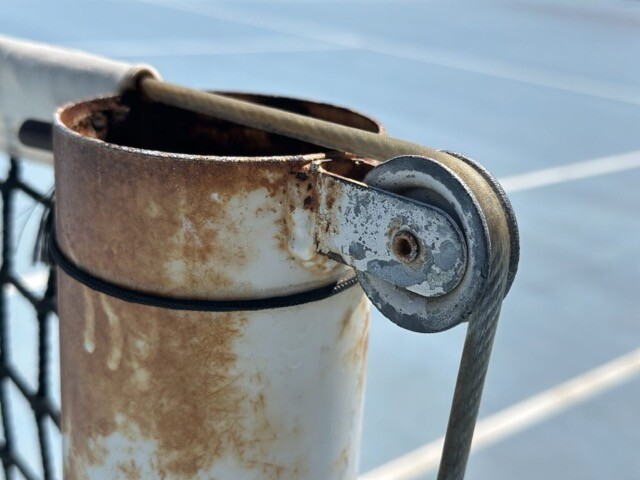
Tennis Net Height Adjustment
How and When to Adjust Tennis Net Height.
- Assessment: Determine whether changing the net height is required based on the players’ needs and skill level. Consider variables like age, experience, and physical abilities.
- Compliance with Regulations: Verify that any changes to the net height still follow the regulations established by the International Tennis Federation (ITF) for official matches.
- Practice Sessions: Modify the net height during these sessions to meet particular training goals and challenges. For instance, lowering the net might motivate players to practice hitting low shots over the net or to improve their volleying techniques.
- Skill Development: Adjust your net height as a tool to help you improve your skills. Adjust the net height gradually following players’ aims and development, offering them a variety of challenges to improve their skills.
- Match Simulation: Change the net’s height to simulate match conditions and players’ obstacles in competitive play. This can assist players in adjusting their techniques to fit various conditions.
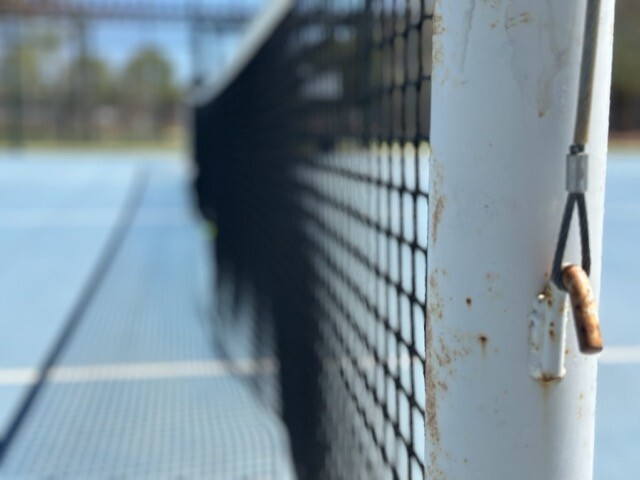
Effects of Adjustments on Gameplay and Player Development
- Technical Skills: Net height changes can affect players’ shot placement, spin control, and footwork. Raising the net may encourage flatter, more aggressive shots, while lowering it may force players to generate more topspin to clear it.
- Tactical Awareness: To account for variations in net height, players must modify their strategies and game plans. Adjustments can help players develop their tactical awareness and decision-making abilities by pushing them to try new tactics and shot choices.
- Physical Conditioning: The game’s physical demands may change if the net height changes. Players may need to bend more and use their leg strength for low shots when the net is lowered, which improves their overall physical fitness and agility.
- Confidence Building: A player’s resilience and self-assurance on the court can be increased by their ability to adapt to varying net heights. Gaining proficiency with lower net shots and higher bouncing balls can boost confidence and prepare players for competitive play.
- Adaptability: Players can improve their game’s versatility and adaptability by training with different net heights. They adjust their tactics and plans to fit various game situations, eventually improving their efficiency and competitiveness.
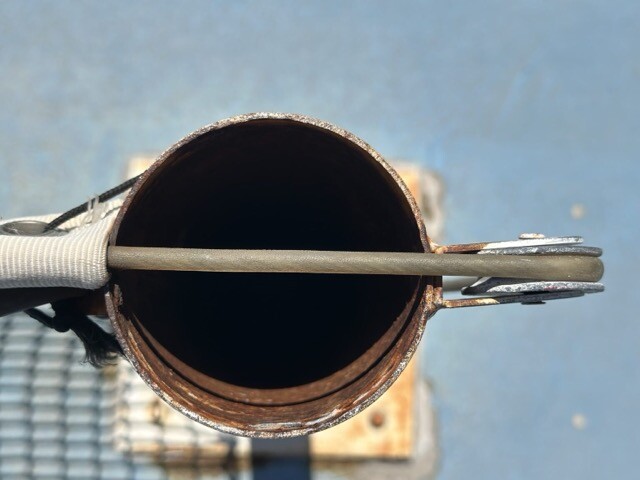
Tennis Net Height Variations
- Mini Tennis and QuickStart Tennis: Mini Tennis and QuickStart are different versions of tennis for young children, beginners, or recreational players. The net height is typically lower than standard tennis nets. The net height in Mini Tennis is often adjusted to around 2 to 2.5 feet (0.61 to 0.76 meters), depending on the players’ age and skill level. For QuickStart, the net height is usually set at a similar level to that of Mini Tennis.
- Beach Tennis: According to the Beach Tennis Federation (BTTF) Regulations, the net height in beach tennis is 5 feet (1.55 meters) at the center of the court and 5 feet 3 inches (91.60 meters) at the posts. This is slightly lower than the net height in standard tennis nets.
- Padel Tennis is a racquet sport similar to tennis but played on a smaller court with walls, so the net height is lower than in normal tennis. International Padel Federation (FIP) Regulations say that the net height is set at 3 feet 3 inches (1 meter) at the center of the court and 3 feet 11 inches (1.2 meters) at the posts.
- Platform Tennis: American Platform Tennis Association (APTA) Regulations say that the net height in platform tennis is typically set at 34 inches (86.36 centimeters) at the center of the court and 36 inches (91.44 centimeters) at the posts.
These differences in net height between the various tennis formats represent each sport’s special qualities and demands, accommodating players of various ages, abilities, and playing conditions. By adjusting the net height, players can be guaranteed a suitable degree of challenge and fun while preserving the game’s core elements.
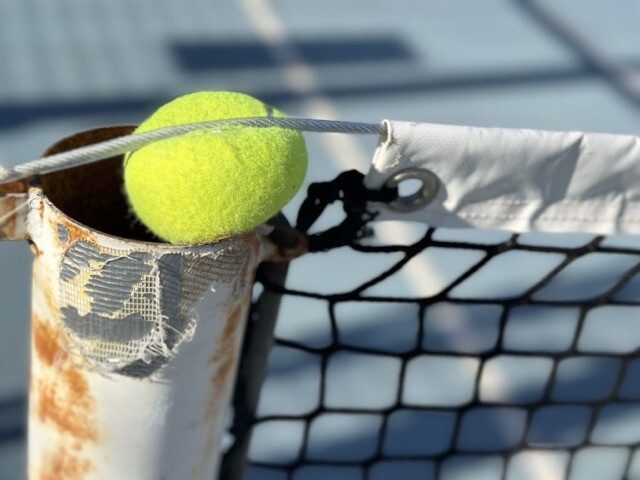
Common Tennis Net Height Myths and Misconception
The statement “Lowering the net height makes the game easier” is misleading; reducing the net height does not always make the game easier. It might make some shots easier, such as volleys and drop shots, but it also means that players have to modify their timing and technique. Furthermore, too much net height reduction can lessen the game’s challenge and strategic elements.
“Increasing the net height makes the game harder”: Although a higher net height could give off an air of intimidation, it doesn’t always translate into a more difficult game. Rather, it motivates players to improve their precision and consistency when making shots. Higher nets encourage longer rallies, highlighting the significance of placement and shot placement.
“Net height doesn’t significantly affect gameplay”: The game’s dynamics are greatly influenced by the net’s height. Variations in net height can affect player performance in general, tactical tactics, and shot selection. Ignoring net height’s importance is like ignoring its influence on the direction and result of games.
“All tennis nets are the same height”: Although the International Tennis Federation (ITF) has established uniform height standards for normal tennis nets, there are differences in various tennis formats, including Mini Tennis, Beach Tennis, Padel Tennis, and Platform Tennis. Specifications for net height may vary depending on the format and the demands of the sport.
Effects of Incorrect Net Height on Gameplay and Player Development
- Technical Skill Development: A correct net height may hamper players’ ability to develop their technical skills. For instance, playing with a net too low can deter players from developing good footwork and shot execution, resulting in technical shortcomings.
- Tactical Awareness: Incorrect net height may distort players’ comprehension of strategic gameplay. An incorrectly positioned net can promote dependence on specific shot kinds while disregarding others, reducing players’ flexibility and tactical options on the court.
- Unpredictable Results: Playing with an improperly set net height can cause unpredictable results and uneven performance. Gamers who need help to adjust their game to changing net heights may become frustrated and lose confidence in their talents.
- Stagnated Player Growth: Prolonged exposure to an inappropriate net height may hamper players’ advancement and general growth. Without the challenge of competing in regulated settings, athletes could find it difficult to hone their abilities and realize their full potential.
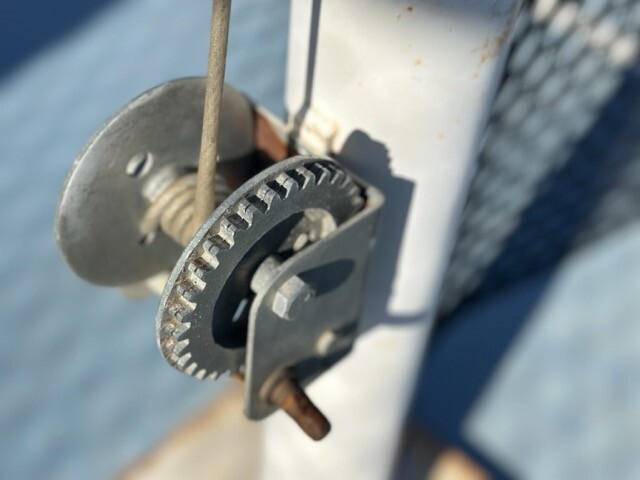
Maintaining and Replacing Nets
Proper Tennis Net Care and Maintenance
- Frequent Cleaning: To keep the tennis net clean, wipe it down with a wet towel regularly to remove dust, debris, and grime. Avoid harsh cleansers and chemicals, as they may harm the net material.
- Checking for Damage: Continually check the net for indications of deterioration, such as fraying, rips, or drooping. Deal with minor problems as soon as possible to avoid more harm.
- Tension Adjustment: Ensure the net is correctly tensioned and firmly attached to the net posts. Adjust the tension as necessary to maintain the proper height and tautness.
- Protective Storage: When not in use, store the tennis net in a dry, climate-controlled space to keep it safe from inclement weather, ultraviolet light, and moisture.
- Avoiding Sharp Objects: Keep the net away from uneven surfaces and sharp items that could rip or pierce it. Handle the net carefully when installing, taking down, and storing it.
Signs That Your Tennis Net Needs to Be Replaced
- Visible Damage: It might be time to replace the net if it exhibits significant damage, such as big tears, fraying ropes, or broken cables.
- Loss of Tension: Despite efforts to modify, if the net no longer maintains the right tension or sags excessively, it may be a sign that the material making up the net has weakened and needs to be replaced.
- Material that has faded or become brittle: Over time, exposure to sunlight and inclement weather can cause net material to deteriorate or become brittle. It might be time for a new net if the existing one exhibits deterioration.
- Safety Issues: To avoid player injuries or equipment damage, any safety issues, such as exposed wires, jagged edges, or shaky net supports, should be replaced immediately.
Tips for Choosing a Quality Replacement Net
- Material Quality: Look for tennis nets composed of long-lasting materials that won’t deteriorate over time, such as polyester, nylon, or polyethylene. These materials also offer dependable performance.
- Mesh Size: Select a net whose mesh size conforms to the International Tennis Federation’s (ITF) guidelines for typical play.
- Reinforced Edges: Choose nets with double-stitched seams and reinforced edges to improve longevity and durability, especially in high-stress locations.
- Appropriate Sizing: Verify that the replacement net fits the dimensions of your tennis court and net posts and the necessary height requirements.
- Brand Reputation: Consider buying from respectable companies or vendors renowned for producing high-quality tennis equipment and satisfying customers.

FAQ
How do you measure tennis net height with a racquet?
Measuring net height with a racquet is not recommended, but if you are in a situation where you don’t have access to proper measuring tools, here is a method with a tennis racquet:
- Hold the racquet vertically, with the handle touching the ground.
- Position yourself at the center of the tennis court, facing the net.
- Extend the racquet upward, aligning it with the center strap or band of the net.
- Estimate where the net’s top would be relative to the racquet head.
- Compare this estimation to the standard height of a tennis net (3 feet or 0.914 meters at the center) to get a rough idea of the net’s height.
How high is a tennis net in the lower middle?
It is standardized at 3 feet (0.914 meters) above the ground, a measurement that is consistent across all standard tennis courts and regulated by the International Tennis Federation.
How to use a tennis net height gauge?
It is quite easy to use a tennis net height gauge. Here’s a detailed how-to:
- Positioning: Set up the tennis net height gauge exactly beneath the net in the middle of the court.
- Alignment: Ensure the gauge is flush with the net post or other support structure and positioned vertically.
- Adjust: Move the gauge up or down until the net’s top is lined up with the indication. Usually, the indication is a line or pointer that shows the net height measurement.
- Reading: After the gauge has been correctly aligned, look at the measurement shown. This measurement represents the net’s height in the middle of the court.
In summary, the tennis net’s height affects technique, strategy, and gameplay, making it an essential game component. Players and officials who recognize its importance and ensure it is properly maintained and regulated maintain the integrity of tennis while promoting fair competition. Players represent the spirit of perseverance and excellence that characterizes the sport as they overcome the difficulties presented by the net’s height.
